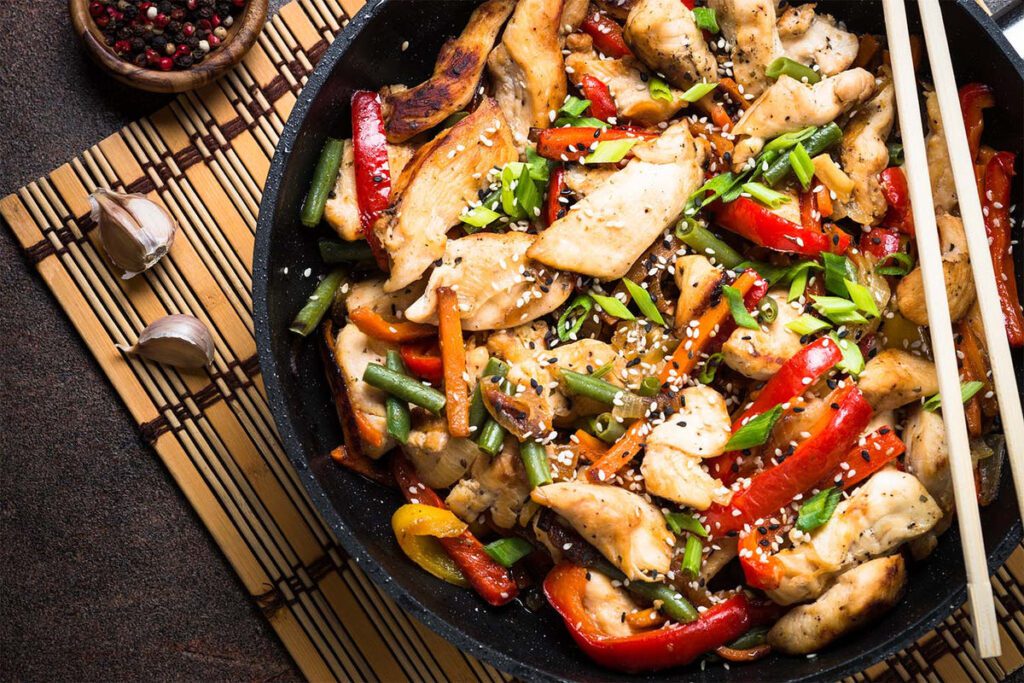Sautéing is a cooking technique where food is cooked quickly in a shallow pan over high heat. Choosing the right equipment such as a flat-bottomed skillet or sauté pan with wide surface areas is crucial. Stainless steel and cast iron pans are ideal because they heat evenly and retain heat well, but non-stick pans should be avoided because they don’t achieve the necessary caramelization. Prepping ingredients and seasoning them with salt and pepper beforehand enhances the flavor, while getting the heat right is a key element to successful sautéing. Sautéing vegetables requires cooking them in a single layer, while meat needs to be seared for a few minutes before using a meat thermometer to check for doneness. Finally, it’s important to clean the pan, avoiding abrasive cleaners or scrubbers.
Sauté with Confidence: Expert Tips for Perfectly Cooked Vegetables, Meats, and More
Introduction
Sautéing is a cooking technique that involves cooking food quickly in a shallow pan over high heat. It’s a simple cooking method that can be used for vegetables, meats, and more. But it can be challenging for beginners, as it requires quick movements and attention to detail. In this article, we will provide expert tips and tricks to help you sauté with confidence and achieve perfectly cooked dishes.
Choosing the Right Equipment
The first step in sautéing is choosing the right equipment. You will need a good-quality skillet or sauté pan that is flat-bottomed and has a wide surface area. Stainless steel and cast iron pans are great for sautéing because they heat evenly and retain heat well. Non-stick pans should be avoided because they do not achieve the caramelization needed for sautéing.
Prepping Your Ingredients
Once you have your equipment ready, the next step is to prep your ingredients. Vegetables should be sliced uniformly to ensure even cooking. Meats should be patted dry with a paper towel to remove excess moisture. Seasoning your ingredients beforehand with salt and pepper will enhance their flavor.
Getting the Heat Right
The key to successful sautéing is getting the heat right. You want your pan to be hot enough to sear the ingredients, but not so hot that they burn. A good test is to add a drop of water to the pan – if it sizzles and evaporates almost immediately, the pan is ready.
Adding the Oil
Once the pan is hot, add a small amount of cooking oil – just enough to coat the bottom of the pan. Olive oil, vegetable oil, and avocado oil are all good options. Swirl the oil around the pan to ensure an even coating.
Sautéing Vegetables
When sautéing vegetables, add them to the pan in a single layer. Overcrowding the pan will result in steaming and uneven cooking. Use a spatula or tongs to flip the vegetables occasionally until they are crisp-tender and slightly browned. Remove the vegetables from the pan and serve immediately.
Sautéing Meat
When sautéing meat, make sure it is at room temperature before adding it to the pan. This will ensure even cooking. Add the meat to the hot pan and let it sear for a few minutes before flipping it over. Use a meat thermometer to check for doneness. Remove the meat from the pan and let it rest for a few minutes before serving.
Cleaning Your Pan
After sautéing, your pan will likely have some residue on it. To clean it, let it cool down and then use a soft sponge or brush to scrub it gently under warm water. Avoid using abrasive cleaners or scrubbers, as they can damage the pan’s surface.
Conclusion
Sautéing is a versatile cooking method that can be used for a wide range of ingredients. By following these expert tips and tricks, you can sauté with confidence and achieve perfectly cooked dishes every time. Experiment with different ingredients and seasonings to create your own unique sautéed dishes. Happy cooking!
